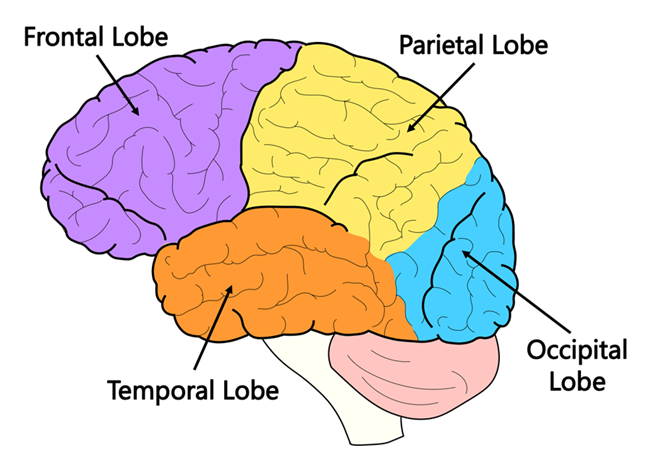A calculator is activated within your exam. Round the answer to the nearest tenth. Use a leading zero if it applies. Do not use a trailing zero. Enter numeric value only. Do not label.
Ordered: haloperidol (Haldol) 1 mg
Available: haloperidol (Haldol) 5 mg/mL
Administer:
The Correct Answer is ["0.2"]
To calculate the amount of haloperidol (Haldol) needed for the ordered dose of 1 mg when the available concentration is 5 mg/mL, we use the formula:
Amount (mL) = Ordered dose (mg) divided by Concentration (mg/mL)
Amount (mL) = 1 mg divided by 5 mg/mL
Amount (mL) = 0.2 mL
Rounding this to the nearest tenth gives us 0.2 mL. Therefore, the nurse should administer 0.2 mL of haloperidol (Haldol) to deliver the ordered dose of 1 mg.
Nursing Test Bank
Naxlex Comprehensive Predictor Exams
Related Questions
Correct Answer is B
Explanation
A. Smell, hearing, memory, and emotional expression:
Dysfunction in the frontal lobe typically does not directly affect sensory functions such as smell and hearing. Memory and emotional expression can be influenced by frontal lobe dysfunction, but they are not the primary functions associated with this brain region.
B. Organization of thought, body movement memories, emotions, and moral behavior:
This choice is the most accurate regarding frontal lobe dysfunction. The frontal lobe is responsible for higher-order cognitive functions, including the organization of thoughts, executive functions such as planning and decision-making, regulation of body movements, emotional regulation, and moral behavior. Dysfunctions in the frontal lobe can lead to deficits in these areas, such as difficulty organizing thoughts, impaired body movements (e.g., apraxia), emotional instability, and changes in moral judgment.
C. Language generation and visual interpretation:
Language generation is primarily associated with areas such as Broca's area, which is located in the frontal lobe but is more specifically related to language production and speech. Visual interpretation is more associated with the occipital lobe, which processes visual information. While frontal lobe dysfunction can impact aspects of language and executive functions related to visual tasks, these are not the primary functions typically affected by frontal lobe dysfunction.
D. Taste, touch, and spatial orientation:
Dysfunction in the frontal lobe is not typically associated with deficits in taste, touch, or spatial orientation. These functions are more related to other brain regions, such as the parietal lobe (for spatial orientation) and the sensory cortex (for taste and touch).

Correct Answer is C
Explanation
A. Legislation dramatically changed civil commitment procedures:
While changes in legislation related to civil commitment procedures have occurred over time, such changes were not specifically associated with the 1950s. The 1950s were marked more prominently by advancements in psychopharmacology, leading to the availability of psychotropic medications.
B. Community support services were established:
Although the importance of community support services for mental health became increasingly recognized in the mid to late 20th century, the establishment of comprehensive community support services did not occur as a significant change specifically in the 1950s.
C. Psychotropic drugs became available for use.
One significant change in the treatment of people with mental illness that occurred in the 1950s was the development and availability of psychotropic drugs. Psychotropic drugs are medications that affect brain function and are used to manage symptoms of mental illnesses such as depression, anxiety, schizophrenia, and bipolar disorder. The introduction of psychotropic drugs revolutionized mental health treatment by providing more effective and targeted pharmacological interventions, leading to improvements in symptom management, quality of life, and outcomes for individuals with mental illness.
D. The Patient's Bill of Rights was enacted:
The concept of patient rights and advocacy for ethical and humane treatment in healthcare settings, including mental health facilities, has evolved over time. However, the specific enactment of a Patient's Bill of Rights did not occur as a significant change specifically in the 1950s.
Whether you are a student looking to ace your exams or a practicing nurse seeking to enhance your expertise , our nursing education contents will empower you with the confidence and competence to make a difference in the lives of patients and become a respected leader in the healthcare field.
Visit Naxlex, invest in your future and unlock endless possibilities with our unparalleled nursing education contents today
Report Wrong Answer on the Current Question
Do you disagree with the answer? If yes, what is your expected answer? Explain.
Kindly be descriptive with the issue you are facing.
